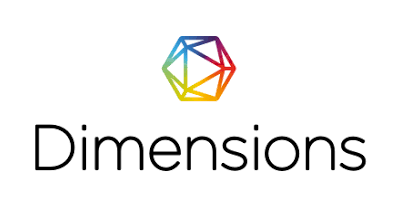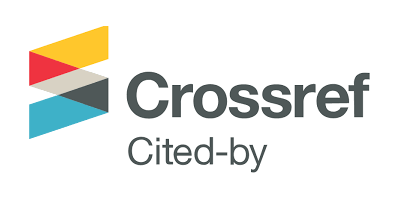The Importance of Community Empowerment in Supporting Child Protection in Aceh Qanun Number 11 of 2008 concerning Child Protection: Case Study of the MEUSEURAYA Programme in Aceh
DOI:
https://doi.org/10.29103/micolls.v3i-.345Keywords:
Child Protection, Community Empowerment, Child Protection Qanun, Violence Against Children, MEUSEURAYA ProgrammeAbstract
Children are assets that have an influence on the progress of a country or community in the future. However, children are often targets of violence which makes them very vulnerable to various acts of violence including abuse and exploitation. Increasing children's understanding of child protection laws through capacity building programmes is considered capable of increasing children's participation in the community and encouraging them to voice their aspirations as an effort to prevent violence. This research aims to explore how the capacity building programme "MEUSEURAYA" is able to empower children to anticipate violence in Aceh. Aceh is a special place because child protection laws apply not only from the state but also from the region (Qanun law). The PAR method was used to collect data by involving programme participants. The results of the activities show an increase in participants' understanding of child protection law and aspects related to it. This shows that the capacity building programme has an effect on increasing children's understanding of applicable laws.
References
Bjorklund, D. Children’s thinking: Developmental function and individual differences. Pacific Grove, CA: Brooks- Cole, 1989.
Eccles, J. S. (1999). The development of children ages 6 to 14. The future of children, 30-44.
Fitriani, R. (2016). Peranan penyelenggara perlindungan anak dalam melindungi dan memenuhi hak-hak anak. Jurnal
Hukum Samudra Keadilan, 11(2), 250-
Hur, M. H. (2006). Empowerment in terms of theoretical perspectives: Exploring a typology of the process and components of empowerment across disciplines. Journal of Community Psychology, 34(5), 523-540.
https://ms-tapaktuan.go.id/hal-artikel-
html. accessed on 14 September 2023.
https://www.antaranews.com/berita/32412 05/merevisi-qanun-demi-melindungi- anak-dan-perempuan accessed on 14 September 2023
Ife, J., & Tesoriero, F. (2006). Community development: Community based alternatives in an age of globalisation (3rd ed.). Melbourne: Longman.
Jim Ife dan Frank Tesoriero, 2008, Alternatif Pengembangan Masyarakat di Era Globalisasi Community Development, Yogyakarta: Pustaka Pelajar.
Junaedi, F. (2019). Participatory Action Research, Metode Riset Untuk Analisis Sosial Partisipatif. Ilmu Komunikasi, Universitas Muhammadiyah Yogyakarta, Yogyakarta: Ilmu Komunikasi UMY.
Kyriakidis, E. (2019). A Community Empowerment Approach to Heritage Management: From Values Assessment to Local Engagement (1st ed.). Routledge. https://doi.org/10.4324/9780429429 361
Lambert, V. A., & Lambert, C. E. (2012). Qualitative descriptive research: An
acceptable design. Pacific Rim international journal of nursing research, 16(4), 255-256.
Mokhtar, N., Xuan, L. Z., Lokman, H. F., & Mat,
N. H. C. Theory, Literature Review, and Fun Learning Method Effectiveness in Teaching and Learning. Science and Education, 3(8), 1738-1744.
Aceh Governemnt (2023). Qanun Nomor 11 Tahun 2008 tentang Perlindungan Anak.Retrieved from https://storage-
acehprov.go.id/index.php/s/9Oin13 cu4XZ8Ubf
Rahmat, A., & Mirnawati, M. (2020). Model participation action research dalam pemberdayaan masyarakat. Aksara: Jurnal Ilmu Pendidikan Nonformal, 6(1), 62-71.
Said, M. F. (2018). Perlindungan hukum terhadap anak dalam perspektif hak asasi manusia. JCH (Jurnal Cendekia Hukum), 4(1), 141-152.
Setiawan, S., Saifunuha, M.A., Kautsar, J.L., & Wulandari, C. ‘Community Empowerment on Establishment of Friendly-Village for Women and Children’. Indonesian Journal of Advocacy and Legal Services, 1(1), 5-
DOI: 10.15294/ijals.v1i1.33756
Siegler, R.S. Children’s thinking. Englewood
Cliffs, NJ: Prentice Hall, 1986
Zainuddin, Muslim, Perlindungan Anak: Antologi Bahan Ceramah Agama, Yogyakarta: Zahir Publishing, 2018.
Downloads
Published
Issue
Section
License
Copyright (c) 2023 agustia rahmi, chalik mawardi, farah hanum

This work is licensed under a Creative Commons Attribution-ShareAlike 4.0 International License.
Authors retain the copyright and grant the proceeding the right of first publication. This work is licensed under a Creative Commons Attribution-ShareAlike 4.0 that allows others to share the work with an acknowledgement of the Creative Commons Attribution-ShareAlike 4.0 that allows others to share work with an acknowledgement of the works authorship and initial publication in this proceeding.
All articles in this proceeding may be disseminated by listing valid sources, and the article's title should not be omitted. The content of the article is liable to the author.
Authors are able to enter into separate, additional contractual arrangements for the non-exclusive distribution of the proceeding's published version of the work (e.g., post it to an institutional repository or publish it in a book), with an acknowledgement of its initial publication in this proceeding.
Authors are permitted and encouraged to post their work online (e.g., in institutional repositories or on their website) before and during the submission process, as it can lead to productive exchanges and earlier and greater citation of published work.
In the dissemination of articles, the author must declare the Proceedings of Malikussaleh International Conference on Law, Legal Studies and Social Science (MICoLLS) as the first party to publish the article.






